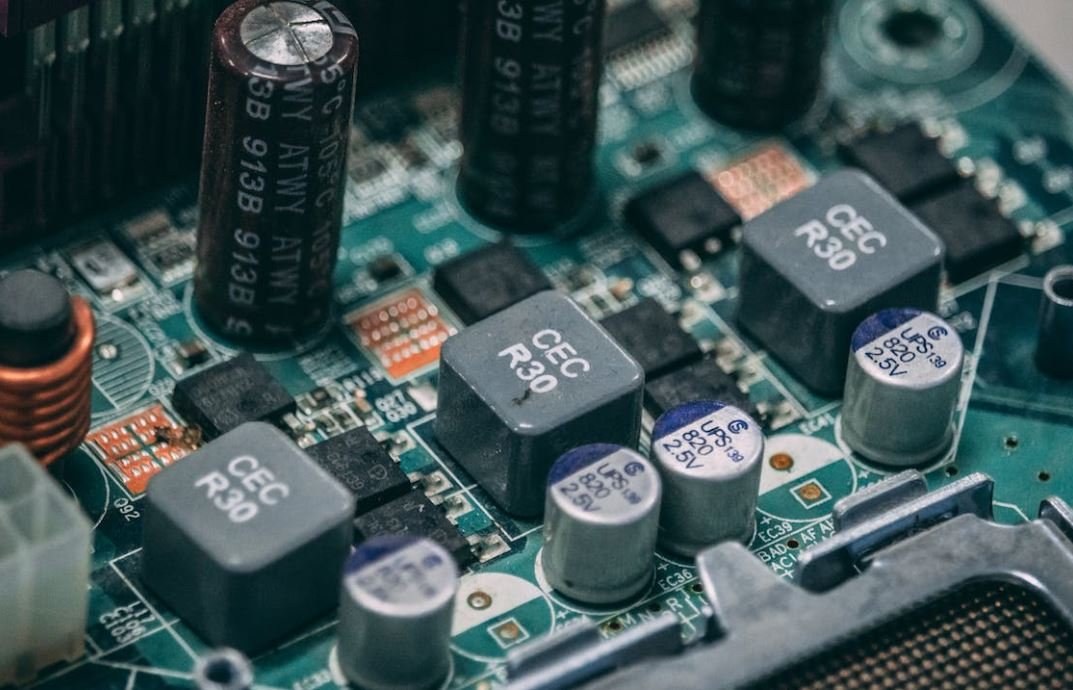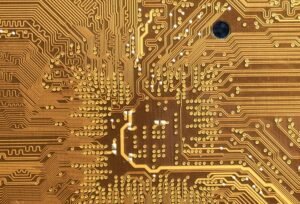Where Is Production of Protein
Protein is an essential macronutrient required for the growth, repair, and maintenance of cells in the human body. It is made up of amino acids, which are the building blocks of protein. The human body is capable of producing some amino acids, but others, known as essential amino acids, must be obtained from the diet. Protein production occurs in various locations within the human body and in other organisms as well. This article explores the different sites where protein is synthesized.
Key Takeaways
- Protein production occurs in different locations throughout the human body and other organisms.
- Protein synthesis begins with DNA transcription and subsequent translation into amino acid sequences.
- Different cell organelles, such as the nucleus, endoplasmic reticulum, and ribosomes, play vital roles in protein synthesis.
- The production of protein is essential for maintaining overall health and bodily functions.
The process of protein synthesis starts with DNA transcription and translation into amino acids. These amino acids are then assembled in a specific order to form a protein molecule through a complex process. Protein production primarily occurs within cells.
Within the nucleus of a cell, DNA molecules contain the instructions for protein synthesis. When a particular protein is needed, the relevant gene on the DNA is transcribed into a messenger RNA (mRNA) molecule. This process is known as transcription. The mRNA molecule then carries the genetic information from the nucleus to the cytoplasm, where protein synthesis takes place.
Interestingly, the human body has over 20,000 protein-coding genes.
The protein production process relies on various cell organelles, each with a specific role. The endoplasmic reticulum (ER) is an organelle involved in protein synthesis and processing. It consists of a network of interconnected tubules and sacs that are responsible for moving proteins throughout the cell.
Once the mRNA reaches the ER, ribosomes attached to the ER membranes bind to the mRNA and begin translating the genetic code into a protein sequence. This process involves the assembly of various amino acids in the precise order dictated by the mRNA molecule.
Did you know that ribosomes can simultaneously synthesize multiple proteins?
| Location | Type |
|---|---|
| Cytoplasm | Free Protein Synthesis |
| Endoplasmic Reticulum (ER) | Membrane-Bound Protein Synthesis |
Once the protein is synthesized, it undergoes further processing and modifications within the ER. These modifications may involve folding, assembling with other proteins, or attaching certain molecules that are crucial for the protein’s function. The ER ensures that the protein produced is properly folded and functional.
After processing in the ER, the protein may be transported to other organelles, such as the golgi apparatus, for additional modifications or packaging into vesicles for secretion. The golgi apparatus is involved in sorting, modifying, and packaging proteins before they are transported to their final destinations within and outside the cell.
Interestingly, some proteins are synthesized and remain in the same organelle where they were produced.
Protein Production in Other Organisms
In addition to the human body, protein production occurs in various organisms, including plants, animals, and bacteria. Each organism has unique mechanisms for protein synthesis.
Bacteria exhibit a simpler form of protein production compared to complex multicellular organisms. They lack membrane-bound organelles like the ER and rely on ribosomes present in the cytoplasm to synthesize proteins.
Plants have specialized organelles, known as chloroplasts, where photosynthesis occurs. Chloroplasts are responsible for synthesizing proteins necessary for capturing and converting light energy into chemical energy.
Animals have complex cellular structures similar to humans, with protein synthesis occurring within cell organelles like the nucleus, ER, and ribosomes.
| Organism | Protein Synthesis Mechanism |
|---|---|
| Bacteria | Cytoplasmic Protein Synthesis |
| Plants | Chloroplast Protein Synthesis |
| Animals | Cellular Organelles Protein Synthesis |
Protein production is a fundamental process for sustaining life and maintaining overall health. It occurs within various organelles and compartments of cells in the human body and other organisms. Proper protein synthesis is crucial for normal bodily functions, growth, and repair.
In conclusion, understanding where protein production occurs provides valuable insights into the complex mechanisms involved in maintaining our health and well-being.

Common Misconceptions
Proteins are only produced in animals
One common misconception is that proteins can only be produced in animals. While it is true that animals produce proteins, plants and microorganisms also synthesize proteins. Plants, for example, produce proteins through the process of photosynthesis. Microorganisms like bacteria and yeast are commonly used in biotechnology to produce proteins through genetic engineering.
- Plants synthesize proteins through photosynthesis.
- Bacteria and yeast are commonly used for protein production.
- Protein production is not limited to animals.
All proteins are created equal in terms of quality
Another misconception is that all proteins are created equal in terms of quality. However, not all proteins are of the same quality. Proteins can vary in their amino acid composition and bioavailability, which affects their nutritional value. Some proteins are considered higher quality as they provide all essential amino acids in adequate amounts, while others may lack certain essential amino acids.
- Protein quality can vary based on amino acid composition.
- Bioavailability of proteins can affect their nutritional value.
- Different proteins may provide different essential amino acids.
Protein production requires high amounts of animal consumption
There is a misconception that protein production requires high amounts of animal consumption. While animal sources like meat, eggs, and dairy products are rich in protein, there are also plenty of plant-based sources that provide ample amounts of protein. Legumes, nuts, seeds, and grains are all examples of plant-based foods that are good sources of protein.
- Plant-based foods can be excellent sources of protein.
- Legumes, nuts, seeds, and grains are protein-rich plant-based sources.
- Protein production is not solely dependent on animal consumption.
Protein supplements are necessary for adequate protein intake
Many people believe that protein supplements are necessary in order to achieve an adequate protein intake. While protein supplements can be convenient, they are not essential for meeting protein requirements. A well-balanced diet that includes a variety of protein-rich foods can usually provide the necessary daily protein intake for most individuals.
- A well-balanced diet can provide adequate protein intake.
- Protein supplements are not essential for meeting protein requirements.
- A variety of protein-rich foods can be included in the diet for sufficient protein intake.
Protein consumption alone leads to muscle growth
It is a common misconception that protein consumption alone leads to muscle growth. While protein is important for muscle repair and growth, it is just one component of a comprehensive approach to muscle development. Physical exercise, including resistance training and proper recovery, are equally crucial for promoting muscle growth.
- Physical exercise is essential for muscle growth.
- Protein alone is not sufficient for muscle development.
- Resistance training and proper recovery are important for optimal muscle growth.

Protein Production by Country in 2020
In 2020, various countries around the world played a significant role in protein production. This table highlights the top 10 producers based on their output in million metric tons (MMT).
| Country | Protein Production (MMT) |
|—————-|————————-|
| United States | 110 |
| China | 82 |
| Brazil | 36 |
| India | 30 |
| Russia | 22 |
| Mexico | 20 |
| Argentina | 18 |
| Canada | 17 |
| Australia | 14 |
| Indonesia | 12 |
Per Capita Protein Consumption by Country
The per capita protein consumption in various countries reveals interesting trends in dietary habits. This table presents the top 10 countries with the highest per capita protein consumption in kilograms (kg) per person per year.
| Country | Protein Consumption (kg/person/year) |
|—————-|————————————–|
| Luxembourg | 107 |
| Australia | 99 |
| Denmark | 97 |
| Norway | 96 |
| Iceland | 94 |
| Canada | 92 |
| Sweden | 91 |
| New Zealand | 87 |
| Austria | 86 |
| Belgium | 85 |
Protein Sources in the Global Food Supply
This table provides an overview of the top sources of protein in the global food supply. The data demonstrates the importance of diverse protein sources to meet nutritional requirements.
| Source | Contribution to Global Protein Supply (%) |
|———————–|——————————————|
| Grains | 54 |
| Meat and Dairy | 34 |
| Pulses and Legumes | 7 |
| Seafood | 3 |
| Nuts and Seeds | 2 |
Environmental Impact of Different Protein Sources
Examining the environmental impact of protein sources helps prioritize sustainable alternatives. This table compares the water footprint and greenhouse gas emissions of various protein sources.
| Protein Source | Water Footprint (liters/kg) | Greenhouse Gas Emissions (kg CO2eq/kg) |
|——————–|—————————–|—————————————|
| Beef | 15,400 | 27 |
| Pork | 5,800 | 12 |
| Chicken | 4,300 | 6 |
| Fish | 1,520 | 4 |
| Tofu | 908 | 1.5 |
| Lentils | 500 | 0.9 |
| Almonds | 3,510 | 2.1 |
Protein Deficiency in Different Regions
This table highlights the prevalence of protein deficiency in various regions, with the data presented as the percentage of the population affected.
| Region | Protein Deficiency (%) |
|——————|————————|
| Sub-Saharan Africa | 28 |
| South Asia | 21 |
| Southeast Asia | 12 |
| Latin America | 9 |
| Middle East | 5 |
| North America | 2 |
| Europe | 1 |
Protein-Rich Vegetarian Foods
Vegetarian diets can provide adequate protein through plant-based sources. This table showcases protein-rich vegetarian foods along with their protein content per 100 grams.
| Food | Protein Content (g/100g) |
|—————–|————————-|
| Lentils | 25 |
| Chickpeas | 19 |
| Quinoa | 14 |
| Tofu | 8 |
| Greek Yogurt | 10 |
| Tempeh | 19 |
Protein Intake Recommendations
Adequate protein intake is crucial for overall health and wellbeing. The table below outlines the recommended daily protein intake based on age and gender.
| Age Group | Male (grams/day) | Female (grams/day) |
|————|——————|——————–|
| Infants | 9-11 | 9-11 |
| Children | 19-34 | 19-34 |
| Teenagers | 52-56 | 46-50 |
| Adults | 56 | 46 |
| Pregnant | 71 | – |
| Lactating | 71 | – |
Protein-Rich Meats
Meat is an excellent source of protein. Here, we present protein-rich meats along with their protein content per 100 grams.
| Meat | Protein Content (g/100g) |
|—————–|————————-|
| Chicken Breast | 31 |
| Turkey Breast | 29 |
| Lean Beef | 26 |
| Venison | 33 |
| Rabbit | 21 |
| Pork Loin | 24 |
Global Protein Market Revenue
The protein market is a thriving industry. This table displays the global revenue generated by the protein market in billions of US dollars.
| Year | Market Revenue (USD billions) |
|——-|——————————-|
| 2018 | 438 |
| 2019 | 468 |
| 2020 | 498 |
| 2021 | 526 (forecast) |
| 2022 | 552 (forecast) |
In conclusion, protein production and consumption are essential elements of the global food system. The tables presented above provide a comprehensive view of protein production by country, protein sources, environmental impact, deficiency, vegetarian options, intake recommendations, and market revenue. Understanding these aspects can inform decision-making regarding sustainable and balanced protein consumption.
Frequently Asked Questions
Q: What is the significance of protein production?
A: Protein production is crucial for various biological processes as proteins are essential for cell structure, function, and regulation within all living organisms.
Q: Where does protein production occur in the human body?
A: Protein production occurs in various locations within the human body, including the cytoplasm, endoplasmic reticulum, and mitochondria.
Q: How are proteins produced in the cytoplasm?
A: In the cytoplasm, proteins are produced through a process called translation, where RNA molecules carry the information from DNA to ribosomes. Ribosomes then synthesize the proteins.
Q: What is the role of the endoplasmic reticulum in protein production?
A: The endoplasmic reticulum plays a vital role in protein production by providing an environment for proper protein folding, modification, and quality control.
Q: How are proteins synthesized in the endoplasmic reticulum?
A: Proteins are synthesized in the endoplasmic reticulum through a similar translation process as in the cytoplasm. However, the endoplasmic reticulum provides additional support for protein maturation.
Q: Are all proteins produced within cells?
A: No, not all proteins are produced within cells. Some proteins can be obtained from external sources, such as dietary intake. However, most proteins essential for the proper functioning of cells are produced internally.
Q: Can protein production occur outside of living organisms?
A: Yes, protein production can also occur outside of living organisms in laboratory settings. Scientists have developed methods to produce proteins using recombinant DNA technology and other biotechnological approaches.
Q: What is the role of DNA in protein production?
A: DNA provides the genetic instructions that determine the sequence of amino acids in a protein. It serves as a template for RNA synthesis, which is then translated into proteins.
Q: How is protein production regulated?
A: Protein production is regulated through a complex system of gene expression control. Various factors, including environmental cues, cellular signals, and genetic mechanisms, can influence the rate and timing of protein production.
Q: Can disruptions in protein production lead to diseases?
A: Yes, disruptions in protein production, such as mutations or errors in the translation process, can lead to the development of various diseases. These conditions are often characterized by abnormal protein function or structure.




